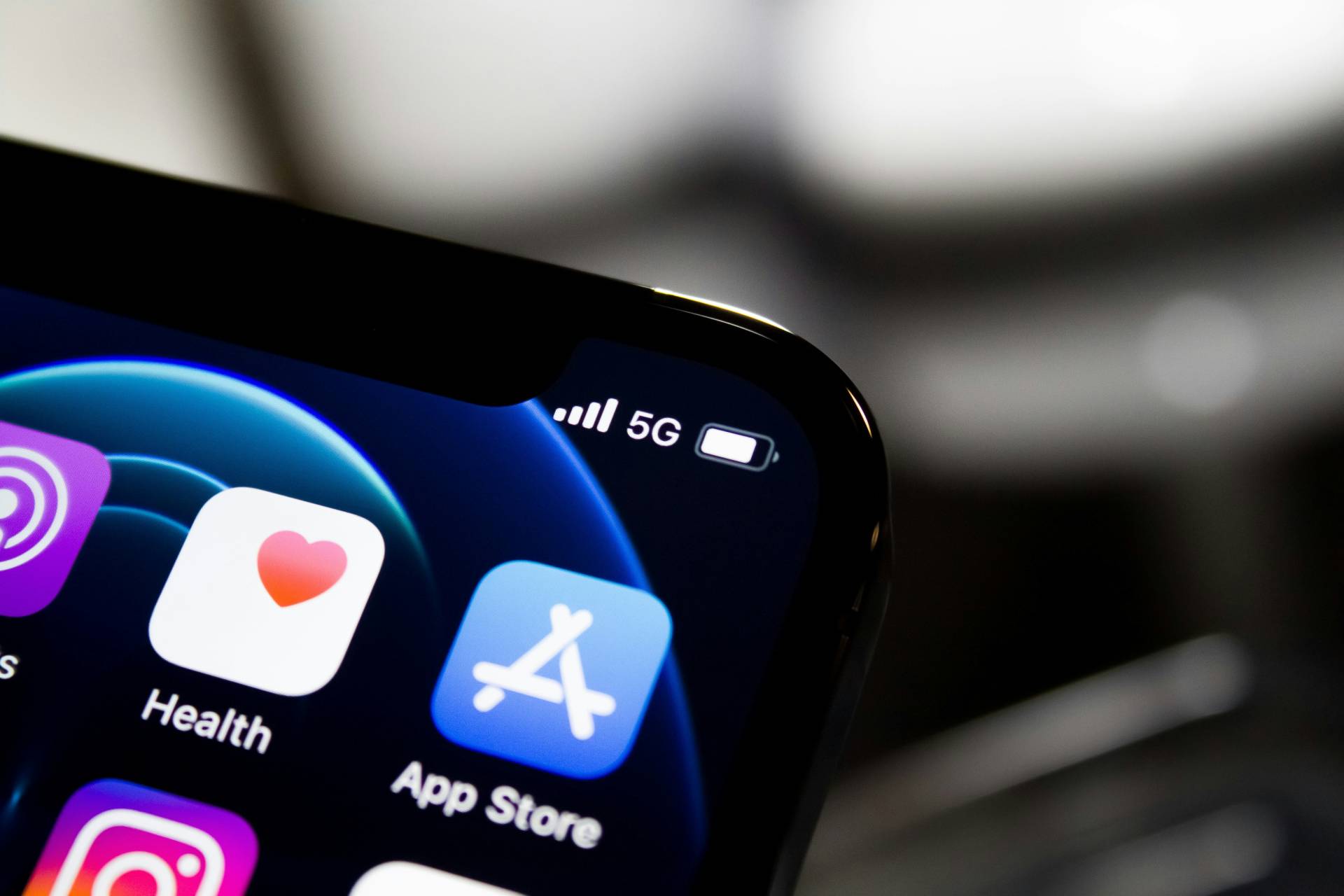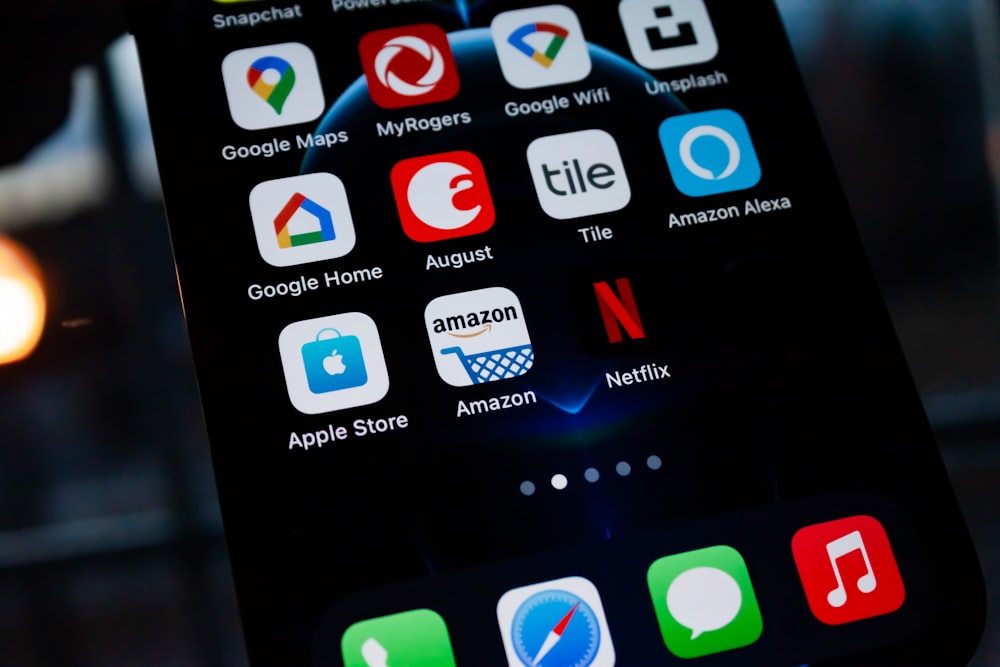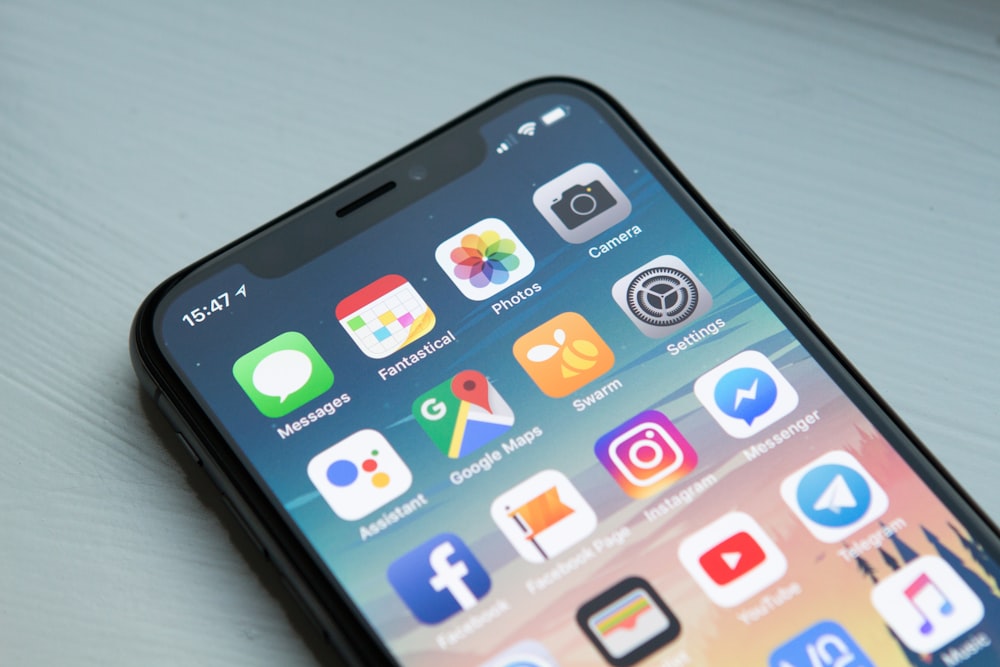In the world of mobile apps, the two major players are the Google Play Store for Android and the Apple App Store for iOS. These app stores dominate the market, offering developers a vast audience and global coverage. However, there are other app stores available that can enhance your app’s visibility and expand its reach. In this article, we will explore various app stores beyond Google Play and the Apple App Store, providing you with a comprehensive guide to publishing your app.
Important App Store Statistics
Before diving into the details of different app stores, let’s take a look at some essential app store statistics. These insights will help you understand the app store landscape and make informed decisions about publishing your app.
- Apple and Google account for more than 95 percent of the app store market share outside of China (BusinessOfApps).
- The Apple App Store is home to around 1.6 million apps for iOS, while Google Play has approximately 3.5 million apps for Android users (Statista).
- Games make up 21.06 percent of the Apple App Store and 15.2 percent of Google Play Store, followed by business and education apps (BusinessOfApps).
- Nearly 97 percent of apps in the Google Play Store and around 95 percent of apps in the Apple App Store are available for free (Statista).
- Mobile app spending is projected to reach 161 billion US dollars on the Apple App Store and 72 billion US dollars on Google Play Store by 2026 (Statista).
These statistics highlight the dominance of Google Play and the Apple App Store in the app market. However, there are still opportunities to explore other app stores and maximize your app’s visibility.
Android App Stores
Android, being an open-source operating system, allows for the existence of multiple app stores. While Google Play is the most popular, there are other Android app stores where you can publish your app and reach a wider audience.
Google Play Store
As the official Android app store, the Google Play Store boasts over 3.57 million published Android apps. It is pre-installed on most Android devices, making it the primary source for app discovery among Android users. The Google Play Store offers various features, including app categories, top-rated apps, and frequent app downloads. To improve your app’s visibility, it is crucial to optimize your app listing with relevant keywords and compelling descriptions.
AppBrain
AppBrain is not a dedicated app store but serves as a platform for app publishers to discover app marketing solutions. It features a browser-based app store where users can find and download Android apps. AppBrain itself has published 35 Android apps with over 50 million downloads. While it may not have a dedicated app for installing applications, you can still access its mobile browser-based app store.
1Mobile
1Mobile is an alternative app store that primarily offers Android apps for download. It provides a wide range of applications, games, eBooks, and other digital products for Android users. With a dedicated mobile app, users can easily discover and download apps from 1Mobile. If you prefer not to rely solely on traditional app stores like Google Play, 1Mobile can be a great option to explore.
Aptoide
Aptoide is an open-source app store platform that allows users to download mobile apps for Android devices. Unlike proprietary app stores like Google Play, Aptoide is decentralized and operates on Android, an open-source mobile operating system. Aptoide reached over 1 million apps in 2018 and also supports apps for smart TVs and VR. It is an excellent choice for publishing Android applications.
SlideMe
Considered one of the top alternatives to Google Play, SlideMe is a dedicated Android app store offering a wide range of Android apps and games. It has been in operation since 2008 and has gained significant global reach. Publishing your app on SlideMe can provide additional visibility and attract users who may not have discovered your app on Google Play.
iOS App Stores
Unlike Android, iOS has only one official app store, which is the Apple App Store. It is the second most popular app store globally, with around 1.6 million iOS apps available for download. As an iOS developer, you must publish your app on the Apple App Store to make it available to iOS users.
Apple App Store
The Apple App Store is the primary app store for iOS devices, including iPhones, iPads, and iPod Touch. It offers a vast collection of apps across various categories. With pre-installation on all Apple devices, the App Store ensures maximum app discoverability for iOS users. To reach the iOS user base, publishing your app on the Apple App Store is essential.
Cydia
Cydia is not an official app store but rather a platform for downloading and installing apps on jailbroken iOS devices. Jailbreaking allows users to bypass software restrictions imposed by Apple, enabling them to access apps not available through the Apple App Store. However, Cydia is only accessible on jailbroken devices, limiting its reach compared to the Apple App Store.
Multi-platform App Stores
Apart from platform-specific app stores, several multi-platform app stores support multiple operating systems. These app stores cater to users across various ecosystems and provide opportunities for developers to reach a broader audience.
Amazon App Store
The Amazon App Store is a popular platform where Android users can download apps. While it may not have the same popularity as Google Play, it offers an alternative marketplace for app discovery. With close to half a million published apps, the Amazon App Store can enhance the visibility of your Android app.
GetJar
GetJar is one of the largest app stores, boasting close to a million published apps. It serves as an alternative to Google Play and allows users to discover apps across various categories. While it may not come pre-installed on Android devices, many app publishers choose to make their apps available on GetJar as an additional distribution channel.
Opera Mobile Store
The Opera Mobile Store is an independent marketplace that supports multiple platforms and devices. It offers apps for Android, Blackberry, Symbian, and Windows. With one million downloads per day, the Opera Mobile Store provides an excellent platform for app publishers to enhance their app’s visibility.
These multi-platform app stores offer app developers the opportunity to reach users across different operating systems and expand their app’s reach beyond platform-specific stores.
App Stores in China
China is a significant market for app publishers, and understanding the app store landscape in China is crucial for success. While the Apple App Store serves as the official marketplace for iOS apps in China, Google Play is banned. This ban has led to the rise of alternative Android app stores in the country. Here are some top Android app stores in China:
- Huawei App Gallery: With a market share of around 44 percent, Huawei App Gallery is the most popular app store in China for Android apps. It is the app marketplace for Huawei smartphones.
- Oppo Software Store: Oppo, a popular smartphone manufacturer, has its own app store with a market share of just under 20 percent in China.
- VIVO App Store: VIVO, another prominent smartphone company, operates its app store in China, with a market share close to 17 percent.
- Tencent MyApp: Tencent, a well-known internet company in China, runs the MyApp app store. It has a market share of approximately 16 percent.
- Baidu Mobile Assistant: Baidu, often referred to as the Google of China, operates the Baidu Mobile Assistant app store, with a market share of 7.2 percent.
These app stores provide opportunities for app publishers to reach the Chinese market and cater to the specific needs of Chinese users.
Operator-Specific and Regional App Stores
In addition to platform-specific and country-specific app stores, some app stores are operated by mobile network operators. While these app stores may not have significant global popularity, they have relevance in specific regions. Here are a few examples:
- T-Store: T-Store is managed by SK Telecom, one of the largest operators in South Korea.
- Jio App Store: Jio is a popular telecom provider in India, and its app store allows users to discover and download Android apps.
- TIM Store: TIM Store is an Italian app store offering free and paid apps. It is also the Netflix carrier in the region.
- MTNPlay: MTNPlay is a pan-African portal that offers customized app stores for 22 different African countries.
While operator-based app stores may not be as prominent as Google Play or the Apple App Store, they can still serve specific regional markets and cater to the needs of local users.
Localizing Your App for Global Markets
In the vast expanse of the digital world, localizing your app for global markets is akin to unlocking new doors to myriad cultures, languages, and user preferences. This section delves into the art and science of app localization, a critical step in transcending geographical boundaries and connecting with a diverse global audience.
The Essence of App Localization
Localization extends beyond mere translation. It is the comprehensive adaptation of your app to meet the linguistic, cultural, and technical requirements of different target markets. This process involves modifying content, visuals, and user interface elements to resonate with local users, ensuring a seamless and relevant user experience.
Why Localize Your App?
Localizing your app paves the way for expanded market reach and increased user engagement. By speaking to users in their native language and catering to their cultural nuances, you foster a deeper connection and build trust. Furthermore, localized apps often see improved app store rankings and higher conversion rates, as they are more aligned with local search behaviors and preferences.
Key Components of App Localization
- Language and Translation: Begin by translating your app’s content, including text, buttons, and error messages, into the target language. Prioritize accuracy and context, considering idiomatic expressions and cultural sensitivities.
- Cultural Adaptation: Adjust your app’s content and design to reflect local customs, traditions, and values. This might involve changing images, colors, and symbols to avoid cultural misunderstandings or offenses.
- Legal and Regulatory Compliance: Ensure your app complies with local laws, regulations, and app store requirements. This includes data protection laws, age restrictions, and payment regulations specific to each region.
- Local User Behaviors and Preferences: Adapt your app to local user behaviors and technological preferences. This includes optimizing for preferred devices, operating systems, and network conditions in different markets.
- Testing and Feedback: Conduct localized testing with native users to identify and resolve any linguistic, cultural, or functional issues. Gather feedback to continuously improve the localization and user experience.
Implementing Localization Strategies
Successful localization requires careful planning and execution. Begin by identifying your target markets and researching their language, culture, and app usage habits. Utilize professional translation services and cultural consultants to ensure authenticity and accuracy. Leverage localization platforms and tools to streamline the process and maintain consistency across different versions of your app.
The Impact of Localization on User Experience
A well-localized app provides users with a seamless and engaging experience, making them more likely to download, use, and recommend the app. It demonstrates respect for cultural diversity and user preferences, enhancing the overall quality and appeal of your app.
Localizing your app for global markets is not just a strategy for expansion—it’s a commitment to inclusivity and user satisfaction. By embracing localization, you can transform your app into a global phenomenon, resonating with users across the world and driving unparalleled growth. The journey of app localization, while complex, is a rewarding endeavor that propels your app beyond boundaries, fostering a truly global connection.
Future Trends in App Store Optimization (ASO)
As the digital world continues to evolve at an unprecedented pace, App Store Optimization (ASO) remains a critical factor in ensuring an app’s visibility and success. This section explores the emerging trends in ASO, shedding light on the strategies that developers and marketers can adopt to stay ahead in the competitive app market landscape.
1. Emphasis on User Experience and Engagement: In the future, ASO will increasingly focus on user experience and engagement metrics. App stores are likely to prioritize apps that offer high user retention, positive reviews, and sustained engagement. Developers must therefore enhance the user experience, streamline onboarding processes, and encourage user feedback to improve app rankings.
2. Integration of Artificial Intelligence and Machine Learning: Artificial intelligence (AI) and machine learning (ML) are set to play a significant role in ASO strategies. These technologies can analyze large datasets to identify patterns and insights, enabling more personalized and effective app optimization techniques. AI can also help predict user behavior, optimize keywords, and improve app discoverability based on evolving trends.
3. Voice Search Optimization: With the rise of voice-assisted devices and voice searches, optimizing apps for voice queries will become crucial. This involves incorporating natural language phrases and question-based keywords into app descriptions and metadata. Developers will need to understand the intent behind voice searches and tailor their ASO strategies accordingly.
4. Visual Optimization and Video Content: Visual elements, including screenshots, icons, and preview videos, will continue to be vital in attracting users. Future ASO will likely emphasize the creation of engaging and informative video content, showcasing an app’s features and user interface. Optimizing these visual assets to convey the app’s value proposition quickly and effectively will be key.
5. Localization and Culturalization: As app markets become increasingly global, localization and culturalization of app content will become more important. This involves not only translating the app and its metadata but also adapting visual elements, currencies, and cultural references to suit different regions and languages. Tailoring ASO strategies to specific markets will enhance global reach and user acquisition.
6. Increased Focus on Security and Privacy: With growing concerns over data privacy and security, apps that demonstrate transparency and adherence to privacy regulations are likely to rank higher. Developers must ensure their apps comply with data protection laws and clearly communicate their privacy policies. Incorporating privacy features as a part of ASO will become a standard practice.
7. Leveraging Social Proof and Influencer Partnerships: Social proof, including user reviews and ratings, will continue to influence app rankings and user decisions. Additionally, partnerships with influencers and brand ambassadors can enhance app credibility and visibility. Future ASO strategies may incorporate influencer endorsements and user-generated content to build trust and encourage downloads.
8. Continuous Monitoring and Adaptation: ASO is not a one-time effort but an ongoing process. As app store algorithms and user preferences change, so too must ASO strategies. Developers will need to continuously monitor their app’s performance, experiment with different approaches, and adapt to new trends and technologies.
The future of App Store Optimization is set to be dynamic and multifaceted, influenced by technological advancements, changing user behaviors, and global market expansions. By staying abreast of these trends and integrating them into their ASO strategies, developers can ensure their apps remain visible, relevant, and successful in the ever-evolving app ecosystem. The journey of ASO is one of constant learning, innovation, and adaptation, mirroring the fluid nature of the digital world itself.
Conclusion
In conclusion, while Google Play and the Apple App Store dominate the app market, there are numerous alternative app stores available for developers to explore. By leveraging these app stores, you can enhance your app’s visibility, reach a wider audience, and tap into niche markets. Whether you choose to publish your app on Android, iOS, or multi-platform app stores, understanding the app store landscape is crucial for successful app distribution. Stay informed, keep exploring, and make strategic decisions to maximize your app’s potential.
FAQ Section on App Stores
What is the most popular app store?
The most popular app store is the Apple App Store, known for its extensive range of apps and stringent quality control. It serves users of iOS devices like iPhones and iPads.
What’s the Android App Store called?
The Android App Store is called Google Play Store. It’s the official app store for Android devices, offering a wide variety of apps, games, and digital content.
How do I access the app store?
To access the app store, navigate to your device’s home screen and tap on the app store icon. For iOS devices, look for the App Store; for Android devices, look for Google Play Store. Ensure you’re connected to the internet before accessing the store.
What is the best app store name?
The “best” app store name can vary based on personal or brand preference. However, names like Apple App Store and Google Play Store are highly recognized due to their wide reach and extensive app collections.
Why is my App Store gone?
Your App Store may seem gone due to restrictions settings, system glitches, or accidental deletion. Check your device’s settings to ensure the App Store isn’t restricted and reboot your device to resolve any temporary glitches.
How do I restore my App Store?
To restore the App Store on an iOS device, go to Settings > Screen Time > Content & Privacy Restrictions > iTunes & App Store Purchases > Installing Apps, and select Allow. If the App Store was removed, you might need to reset the home screen layout or restore the device.
What are the two biggest app stores?
The two biggest app stores are the Apple App Store for iOS devices and Google Play Store for Android devices. They dominate the market in terms of the number of apps available and the volume of app downloads.
What is Apple’s app store called?
Apple’s app store is called the App Store. It’s the official platform for downloading apps on iOS devices such as iPhones and iPads.
Which app has the most downloads?
As of the latest data, apps like Facebook, WhatsApp, Instagram, and TikTok are among those with the most downloads worldwide across app stores. The specific app with the most downloads can vary over time due to trends and new app releases.
Featured Image Credit: Photo by James Yarema; Unsplash – Thank you!
















